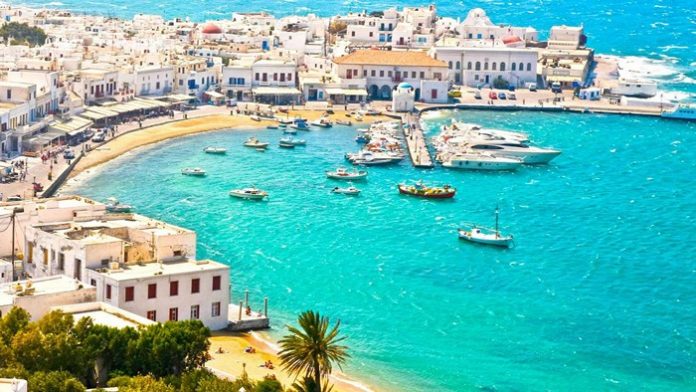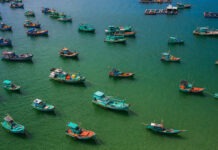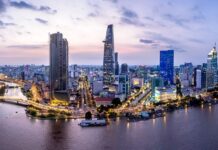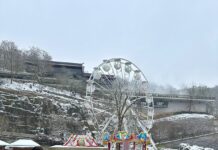There are over 200 inhabited islands in Greece — and over 6,000 isles of varying sizes all together. Each has its own character and tourist attractions, from the whitewashed cave homes of the Cyclades to the lush, green Italianate Ionians, to the Dodecanese capped with Crusader castles. Here are the best islands of Greece.

Crete: The largest Greek island, with its own customs, climate, accent, and cuisine. Discover incredible beaches, including the unparalleled pink-sand Elafonissi; Venetian towns like Chania and Rethymnon, top-notch ruins such as the palace at Knossos, and a growing locavore scene that benefits from the exceptionally favorable climate and fertile ground. You can even explore the remote mountains, the resort-filled Gulf of Mirabello in the east, or historic Chania in the west.

Syros: On Syros, capital of the Cyclades, the colorful 19th-century city of Ermoupoli is built on twin peaks – one Orthodox, the other Catholic, the heritage of a long Venetian occupation. There is still a strong Italian flavor in Ermoupoli’s marble piazzas, princely mansions, and miniature replica of La Scala, the showpiece of a year-round cultural scene. Syros hosts festivals of animation, dance, digital art, film, classical music, jazz and rembetiko, the Greek blues popularized by local musician Markos Vamvakaris. A few rembetiko joints have survived in the upper town, Ano Syra.
Once Greece’s ship-building centre, Syros still has a boatyard at Neorio. But the most splendid legacy of the shipping industry are the manor houses in Vaporia and Poseidonia. The beaches are slightly less splendid — with the exception of Delfini, Varvarousa, and Aetos in the wild north.

Navagio Beach, Zakynthos, Ionian Islands: Lush and green, the Ionian Islands (also known as the ‘seven islands’ or ‘Eptanissia’) were never under Turkish rule. They have been their own country but were also governed by the British, the French, and, most significantly, the Venetians. The mix of influences led to the development of unique local culture, music, art, cuisine, and architecture, which is most visible in the Old Town of Corfu, with its Italianate buildings, smattering of palaces, narrow alleyways hung with laundry, and grand squares built around imposing Orthodox and Catholic churches.
Scattered along the western coastline of Central Greece, the Ionian Islands as they are known, are an island cluster comprising twelve small and large islands whose total surface area comes to 2,200 square kilometers. Zakynthos, Ithaca, Corfu (Kerkyra), Kefalonia, Lefkada, and Paxi are the six, large Ionian Islands. Antipaxi, Erikousa, Mathraki, Othoni, Meganisi and the deserted islets of Strofades south of Zakynthos are the smaller Ionian Islands.
Near Corfu, tiny Paxos is covered in olive trees, with three charming bays and a satellite island, AntiParos, known for its transparent waters. Kefalonia, the largest island in size has wild horses running around Mount Aenos in its center, a vast cave (Dragonata), an underwater lake (Melissani), and a tragic recent history made famous in Louis de Berniere’s novel, Corelli’s Violin. Zakynthos is home to Shipwreck Beach, accessible only by sea. Lefkada, connected to the mainland by a bridge, has woodland villages in the middle and some of Greece’s best beaches along its shores. Small Ithaka, arguably the home of Ulysses, is still relatively undiscovered, except by the immigrants who have returned to their picturesque home. And Kythera is the outlier—it looks more Cycladic than Ionian and is more easily reached from the Peloponnese than from its fellow Ionians—but its wild beauty makes it worth the trip.

Sporades: There are 24 of these green islands off of the northeastern coast of mainland Greece, but only four are inhabited- Alonnisos, Skiathos, Skopelos and Skyros.
Dark green pine trees, white churches, lots of sand and rocks, and singing. Buzzy Skiathos is famous for its gold sand beaches and nightlife, while low-key Skopelos is a natural paradise of white pebble coves, oak forests, monasteries, traditional villages, and lots of shipwrecks off the coast in the National Marine Park. Did we mention a National Marine Park, Alonissos is at the center of it, a great base for fishing, bird-watching, and spotting the protected Mediterranean monk seal. Its claim to fame (aside from the Marine Park and wealth of flora and fauna) is the local cheese pie. Skyros’s claims to fame, on the other hand, are its ceramics, handicrafts, churches, and gorgeous Chora, the mountaintop capital crowned by a Venetian castle.

The Dodecanese: This archipelago gets its name from the Greek number twelve (dodeca) because it contains—you guessed it—12 main islands and multiple smaller ones. Rhodes and Kos are the two largest islands while smaller ones are largely undiscovered. As elsewhere in Greece, these islands were shaped by eons of history; in the town of Lindos on Rhodes, for example, there is an ancient Greek acropolis at the top of the hill, a medieval village in the middle, and a modern town on the beach at the bottom. Rhodes is known for its beautifully preserved medieval walled city with Crusader castles and ancient synagogue, Kos is distinguished by its 4th-century Asclipion complex, Patmos is famous for the still-working Monastery of St. John the Divine and the nearby cave in which he had the vision which inspired the Book of Revelation, and every sizable island has its own castle.

The Northeast Aegean Islands: This collection of 13 islands (with five notable big ones—Ikaria, Samos, Limnos, Lesvos, and Chios) are the area of Greece that is closest to the peninsula of Asia Minor. A visit here means you will be richly rewarded by incredible beaches and natural wonders (a petrified forest on Lesvos, volcanic rocks and sand dunes on Limnos, the only-on-the-island mastic trees on Chios, thermal springs on Ikaria), medieval fortress villages (chief among them Mesta on Chios), and amazing food. The local cuisine may be one reason Ikaria is a Blue Zone, a site where locals live healthy lives to age 100 and beyond.

Milos: The volcanic island where Aphrodite’s graceful likeness was discovered. Those in the know jealously guard their treasured island, and especially its 70 (or more) beaches — surely the most diverse and dramatic coastline of all the Greek Islands.
The island is known for its undulating cliffs at Sarakiniko, the bottle-green swimming hole at Papafragas, and colourful, rickety syrmata, tiny boat houses wedged between rock and sea. This painterly landscape was shaped by the minerals that have long been a source of wealth – obsidian, alum, barite and sulphur, which still bubbles up in the island’s many hot springs. As the 11,000-year-old mining industry is gradually giving way to tourism, several chic hotels have made an appearance.

















